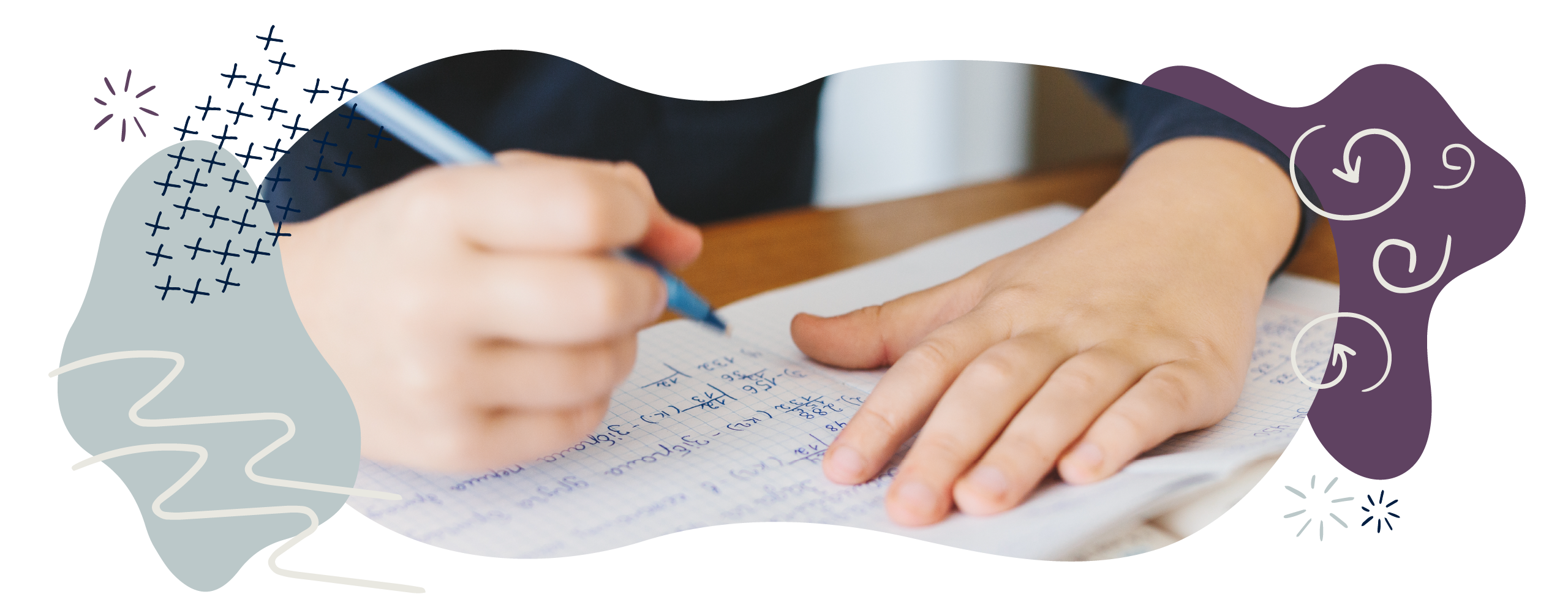Geometry in Year 3 (age 7–8)
In Year 3, your child will continue to learn the properties of shapes, will investigate right angles, and will understand perpendicular and parallel lines.
The key words for this section are 2D, 3D, polygon, polyhedron, parallel, and vertex.
What your child will learn
Take a look at the National Curriculum expectations for geometry in Year 3 (ages 7–8):
Understand properties of 2D and 3D shapes
Your child will draw common 2D shapes accurately, and will make 3D shapes using modelling materials like straws and modelling dough. To draw shapes, they will be able to measure straight lines accurately.
They will be able to recognise 3D shapes like square-based pyramids, spheres and cones, and will be able to describe them using language such as edge, straight, curved, face, vertex (vertices), and curved surface.
As well as regular shapes, they will be able to describe symmetrical and non-symmetrical polygons and polyhedra. Polygons are 2D shapes that have three or more straight sides. Polyhedra (the plural of polyhedron) are 3D shapes made up of 2D flat faces, such as cubes or cuboids.
Understand angles in shapes and turns
Your child will also recognise that angles are a property of shapes and can be used to describe them. For example, a square has four right angles.
Recognise and use right angles
Your child will:
-
- Identify right angles.
- See that 2 right angles make a half-turn.
- See that 3 right angles make three-quarters of a turn.
- See that 4 right angles make a complete turn.
- Identify whether angles are greater than or less than a right angle.
For 2D and 3D shapes with angles greater or lesser than right angles, they will learn to describe their properties using accurate language like acute and obtuse.
Identify perpendicular and parallel lines
Your child will be able to recognise horizontal and vertical lines in 2D and 3D shapes, in drawings, and in real life. They will be able to tell if pairs of lines are perpendicular or parallel.
When a pair of lines is perpendicular, it means that one line is at 90° to another line, forming a right angle.
When a pair of lines is parallel, it means they would stay the same distance apart no matter how long they were. Parallel lines can never cross each other.
How to help at home
There are lots of everyday ways you can help your child to understand geometry. Here are just a few ideas.
1. Explore the properties of shape
Encourage your child to describe shapes in terms of their properties, such as:
-
- the number of vertices/corners
- the number of sides/edges
- the number of faces
- types of angles within them
- the number of lines of symmetry (if any).
Try to get into the habit of using accurate language, such as symmetrical, polygon, polyhedron (polyhedra), vertical, horizontal, perpendicular, parallel, and so on. You can practise by showing your child a shape like this and asking your child to describe it:

Your child could say that this is a triangle. They may tell you it has 3 straight sides and 3 corners. They may tell you that a triangle is a polygon. They may tell you that there are 3 acute angles (angles that are smaller than right angles). They may explain that the shape has 3 lines of symmetry. This all helps them get used to describing the properties of a shape clearly and accurately.
2. Play the ‘cut out shapes’ game
To help your child identify symmetrical polygons and polyhedra, start by drawing some different 2D shapes with your child. Ask your child to cut out the shapes to investigate whether they are symmetrical or not. They can do this by folding the shape to see if it can be folded exactly in half.
You could play a game with your child by matching pictures of 2D and 3D shapes to the correct name and properties. For example, the picture of the triangle would match to the word ‘triangle’ and the properties ‘3 straight sides’ and ‘3 vertices’.
3. Make 3D shapes
Have a go at making 3D shapes using drinking straws attached together with tack, and then try to match them to certain properties. For example, which of the shapes has 8 vertices? You could also try sorting the shapes. For example, can your child sort them from the smallest number of faces to the largest?
4. Talk about angles
Your child will learn that angles are a measurement of the size of a turn. Your child should know that a right angle is equivalent to a quarter turn. Help them recognise that 2 right angles make a half-turn, 3 make three-quarters of a turn, and 4 make a complete turn.
You could practise making turns by spinning around! Ask your child to make whole, half, quarter, and three-quarter turns clockwise and anti-clockwise. Try phrasing this as a certain number of right angle turns to help them get used to the vocabulary. For example, ‘please turn clockwise for 3 right angles’.
Video: What is an angle?
5. Play the directions game
To practise turns and angles, try this game. Blindfold your child and give them directions to a specific location. To get them there, you can use the language of direction and turns – for example, ‘Make a half turn clockwise, now take three steps forward’, and so on.
6. Spot angles in sport
Sports provide many opportunities for your child to recognise angles. Divers often make two and a half somersaults, which refers to the number of turns they will make before they enter the water. In snowboarding and skateboarding, there is an move called the Backside 180 where the rider makes a 180° rotation in mid-air.
Ask your child about these terms and discuss how they relate to their understanding of turns and angles.
